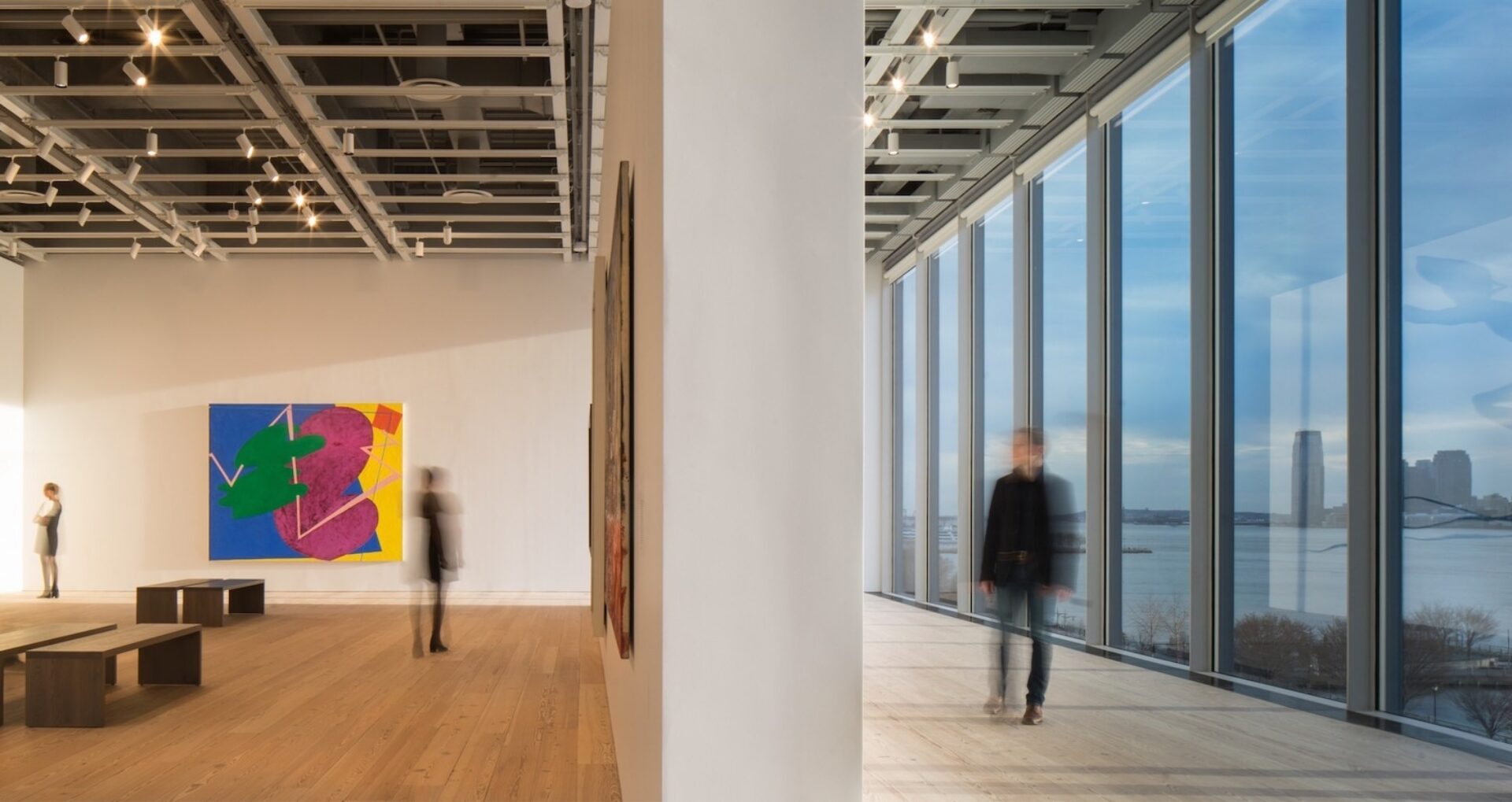Museums are a cultural and educational beacon for communities around the world. But the shutdowns and strict social distancing rules that were part and parcel of the pandemic have left museums large and small questioning their very survival.
According to an October survey by the American Alliance of Museums, museums across the U.S. have reported lost revenue, staff, and on average 35% loss of capacity—a number that is unsustainable long-term and keeps many institutions at risk of permanent closure. Museums also reported spending an average of $27,000 on reopening prep, with that number soaring as high as $750,000 in some cases.
To find out how museum spaces are being reimagined and reinvigorated, we spoke to three designers that are familiar with the challenges that face these spaces:
- Waqas Jawaid, partner at Isometric Studio, New York
- Bruce Davis, AIA, partner at Cooper Robertson, New York
- Bevin Savage-Yamazaki, senior associate at Gensler, New York
In what ways are designers currently rethinking museum interiors to ensure the safety of visitors? And how has this changed their experience?
Jawaid: Both museums and visitors are more aware of and intentional about the total experience of visiting a museum. Previously, many visitors might have entered galleries on autopilot, tried to absorb as much as possible, and then left feeling overwhelmed and fatigued. They might not have thought as critically about the kinds of content curated for them.
Now, museums are curating not just the exhibitions but also the entire visitor experience with timed entry, visible paths of circulation, non-touch methods for interaction, and designs for outdoor, interstitial, and digital spaces. We’ve found that this seems to get visitors to pay more attention and actually read the gallery text and labels, because there’s often a wait as they move from object to object.
Savage-Yamazaki: While it’s not the best time for museums, it’s a great time for the visitor. They get the whole place to themselves, so there’s more intimacy with the exhibits. Museums will want to see how to expand this idea, finding the balance between making money while continuing to elevate the visitor experience.
Davis: The pandemic has put a spotlight on the role of materials and finishes, with designers specifying products that are easier to clean or that have antimicrobial properties. There has been greater integration of contactless devices and fixtures like automatic doors and touchless faucets.
We’re also seeing more designers explore a more creative use of outdoor spaces for permanent and temporary exhibits, and for programs and visitor amenities.

What will museums look like once the pandemic finally ends?
Davis: While robust climate control and air-filtration systems have always been necessary to preserve museum collections, the enhanced standards that have helped reduce the spread of the COVID-19 virus are likely to become stricter in the future.
While some acute safety measures and physical distancing practices will likely fade away as the pandemic ends, the events of the past year have also catalyzed a larger rethinking of the status quo for many cultural institutions and the need for adaptability in times of crisis will remain essential for the long term.
Museum spaces will be more adaptable to change to serve the public safely and efficiently while continuing to engage their missions. As we’ve seen during the current pandemic, museum interiors designed with the inherent flexibility to transform from lecture or event hall to exhibition spaces or other uses are better able to respond to the future. This emphasis on multi-use spaces and doing more with less will be a major legacy of the pandemic period.
Savage-Yamazaki: In the near-term, there will likely be a reinvestment in permanent collections. Museums will be going back into the vaults and dusting things off, and reframing collections in a new way. It’s an exciting opportunity, actually, instead of the big blockbuster traveling exhibitions it’ll be interesting to see what’s important to individual communities, and what people are looking at right now. Because tourism will take a while to come back, I forsee a more localized focus on exhibitions.
Jawaid: There’s a new demand and awareness about the seamless continuation from the physical realm of original objects and tangible spaces to the highly personal and intimate digital realm. We are beginning to conceive of immersive and rich museum experiences that begin on visitors' computers or phones, continue within the spaces of the galleries, and are revisited and shared back in the digital space.
What about 10 or 20 years down the road? What will museums look like then?
Davis: Museums, like theaters and other cultural venues, are an important part of public life. They can serve as spaces for contemplation and reflection, but also for gathering, community, and connection. The ongoing lockdowns demonstrate to many of us how valuable it is to have places in our lives that can fill all of these different roles. It also became clear this year that there are real opportunities to strengthen and rebalance the museum’s role as a community hub, cultural asset, and tourist destination.
Jawaid: We worry that viruses such as COVID-19 may become more frequent as a result of climate change and the decimation of natural ecosystems. This virus is particularly damaging because it is both highly transmissible and debilitating to human health and life. However, we have also learned simple measures that can keep such a virus at bay: good ventilation, use of masks, hand washing, and so on. These rules of thumb will have a seismic influence on the way we build and use our public spaces.
Regardless, one thing will not change: Humans are a social species. We will adapt and invent new ways to connect with other human beings.
(Images: The Whitney Museum of Art, photos by Nic Lehoux courtesy of Cooper Robertson)

